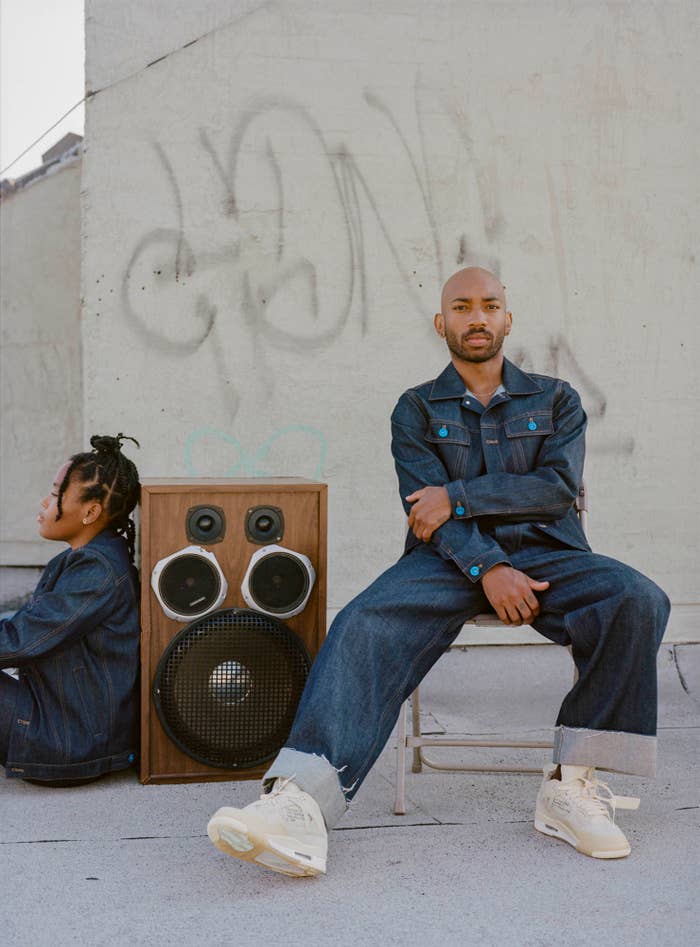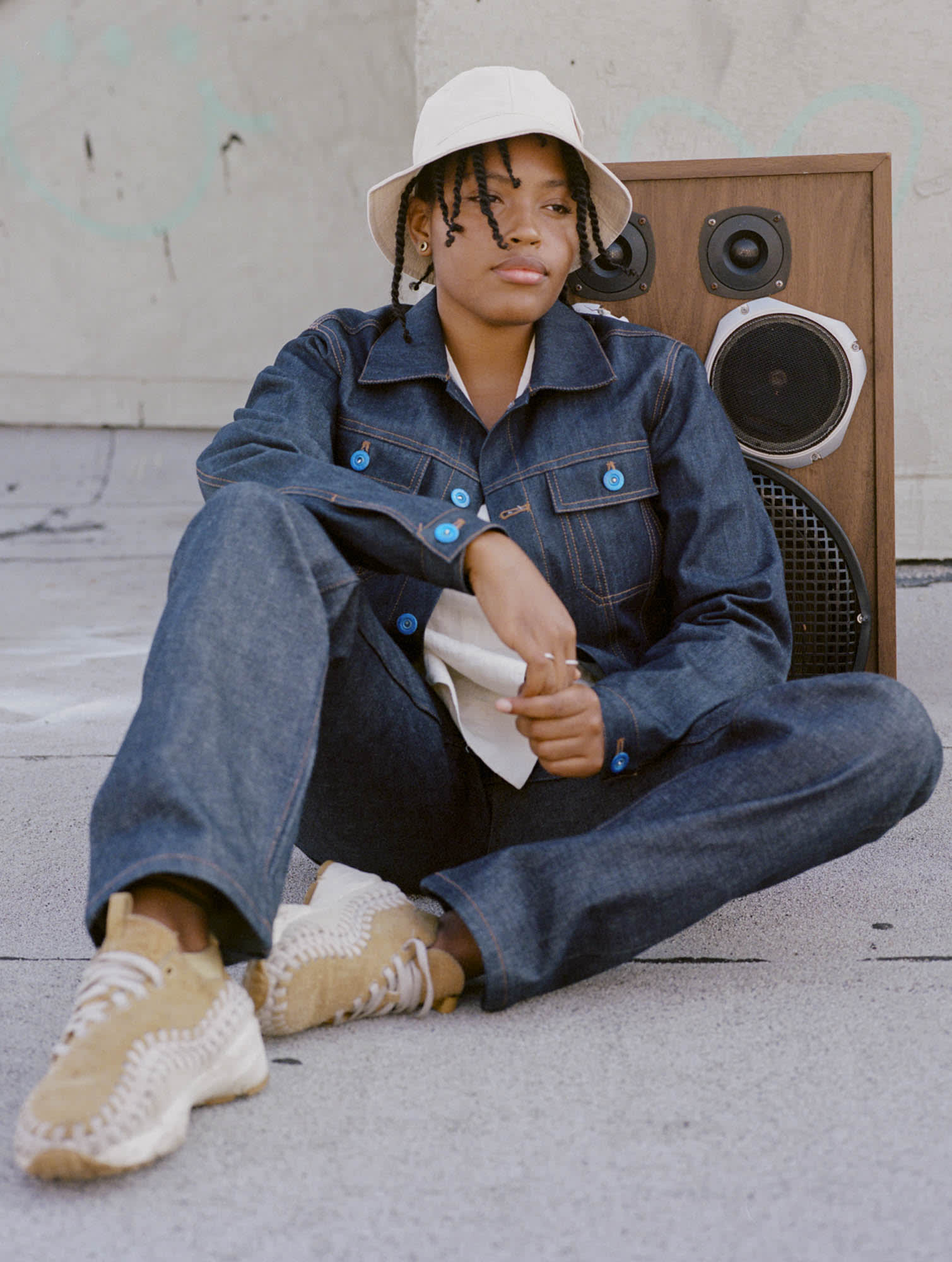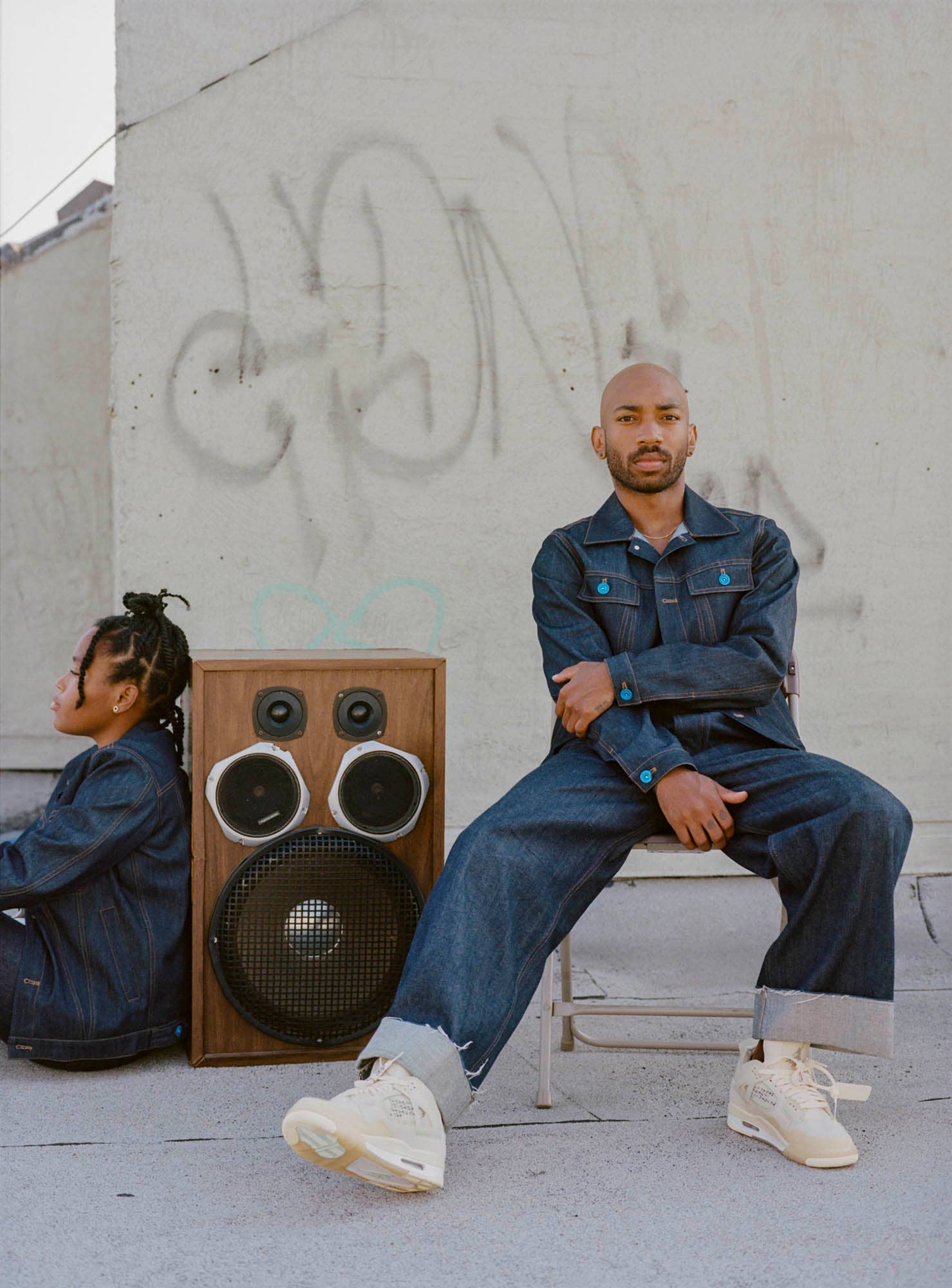
Antoine Gregory joined Twitter in 2012.
At the time he was studying fashion merchandising management and fabric styling at the Fashion Institute of Technology and wanted to connect with creatives who looked like him.
Then in September 2016, during New York Fashion Week, he noticed a lack of Black designers on the schedule, so he decided to create a Twitter thread highlighting Black designers to know. The list included well known brands like Pyer Moss and Telfar along with lesser known ones like Spencer Badu.
“The list just grew and it was pretty popular,” says Gregory, who has become an advocate for Black designers, stylists, and photographers via his Twitter account bibbygregory. If he’s not bringing attention to Black creatives, he’s informing his followers when Telfar bags are dropping, or posting about the pieces he’s purchasing from Black brands like Grace Wales Bonner and Botter. He’s been an outspoken voice and even had discourse with Virgil Abloh on the social media platform.
And now, almost exactly four years after his first Black fashion designers thread, he’s creating another platform for Black designers with Black Fashion Fair, a digital tradeshow that launches Friday, September 18. It’s open to fashion buyers and consumers who will be able to shop pieces from the following brands: Anifa Mvuemba's Hanifa; Brandon Blackwood; Fe Noel; Rebecca Henry and Akua Shabaka's House of Aama; Taofeek Abijako's Head of State; James Flemons’ Phlemuns; Jason Rembert's Aliette; Martine Ali; The Nu Bamboo; Pierre Davis’ No Sesso; Nicole Zizi’s Nicole Zizi Studio; Josh Allen's Richardandgrace; Ron Louis; Spencer Badu; Sheila Rashid; Sunni Dixon’s Sunni Footwear; Tia Adeola; Johnny Nelson; Kerby Jean-Raymond’s Pyer Moss; Tejahn Burnett; Edvin Thompson's Theophilio.

The shop will be open for a month, and following that Gregory will coordinate additional monthly drops that will include exclusive pieces and mainline items from different collections.
“I was thinking of how I could, in my own way, offer more visibility to Black designers and help them sustain their business. But how could I do that in a way that’s also fun, modern, and cool?” says Gregory. “With Black Fashion Fair, I’m taking a small group of designers that are emerging and established and putting them together so that their overall reach becomes much larger.”
The tradeshow’s name was influenced by The Ebony Fashion Fair, a traveling fashion show founded in 1958 by Eunice Johnson, the late wife of Ebony magazine’s founder John Johnson. Eunice Johnson would travel the country with Black models who wore pieces from Black designers and European luxury brands like Yves Saint Laurent—Johsnon was one of the few Black women who would attend fashion shows in Europe and would purchase pieces for the show. The Ebony Fashion Fair, which ended in 2009, was her way of carving out space for Black people in fashion, similar to what Gregory is doing now.
The first Black Fashion Fair was meant to be a physical event. Gregory found a venue and a sponsor so designers could have free booth space and speak directly to fashion buyers from stores or customers.
But because of Covid-19, Gregory had to pivot to a virtual experience. Many of the brands who are currently thriving during a pandemic have a strong direct-to-consumer online presence, and with department stores like Barneys closing, and others like Neiman Marcus filing for bankruptcy, Gregory says it’s even more important for brands to focus on their digital presence.
“Most Black designers do direct-to-consumer business anyway, and that's where we're going to need to go,” says Gregory. “Most multi-brand retailers are going to cease to exist.”
Gregory has spent his career working in visual merchandising, ensuring that brands’ imagery entice people to purchase. He’s offering that insight to participating Black Fashion Fair brands and helping their collections appear commercial but still aspirational. Along with the marketplace, the site will feature shoots that Gregory will style. For the first fashion story, he worked with Black photographer duo AB + DM to shoot Pyer Moss. Joshua Binyard shot the video.

“I'm mostly excited about the fashion stories segment because it gives an opportunity for Black designers to be seen in an editorial light, which again we are historically left out of,” says Gregory. “Most of these designers do a great job of telling a story, we need to do a great job of selling the product and the story.”
One of the younger designers who’s participating is Nicole Zizi, a Florida native who lives in New York and runs a sustainable streetwear brand called NICOLE ZÏZI STUDIO. She met Gregory through Twitter, and was interested in the Black Fashion Fair concept after seeing that Sheila Rashid, one of her favorite designers, was involved.
“I like that it’s a network of Black designers at various levels who are able to connect and talk and pull together their resources,” says Zizi.
She’s one of the many Black designers who has received more press following the murder of George Floyd. She’s thankful for it, but says what she needs the most help with is business and infrastructure. Zizi had to drop out of Parsons because she couldn’t afford it, and used her own money to launch her brand, which came with a lot of trial and error.
“The biggest challenge to starting a streetwear brand, besides the capital part, is finding a manufacturer that will one, open its floor to a Black woman, and two, work with lower minimums,” says Zizi, who plans on enrolling at the Fashion Institute of Technology to learn more about business management. She’s designed a sustainable, denim jacket and jeans with blue buttons for the marketplace.

Gregory doesn’t take any money from the participating designers, he just asks that 15 percent of proceeds go towards educational initiatives that will include courses teaching kids the technical skills needed to design. Once things are back to normal he’d love to host an intimate gala, exhibits, and trunk shows. His site also features a directory of Black designers ranging from Virgil Abloh to Isaia Rankin, one of the first fashion designers to collaborate with Jean Michael Basquiat who died in 1989 at 35.
“The focus should really be on creating a sustainable business for Black designers,” says Gregory. “Black designers need money, they need visibility, they need infrastructure. That’s what I want to offer with Black Fashion Fair.”

